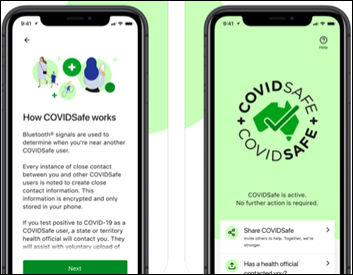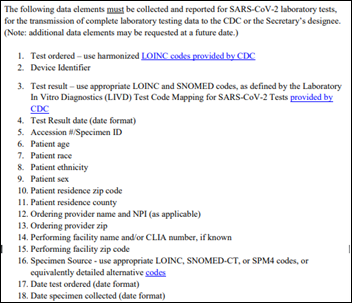News 7/8/20
Top News
A new KLAS report that looks at advanced users of clinical communications platforms finds that Epic, Halo, and TigerConnect have the greatest breadth of workflows; PerfectServe and Telmediq have fewer workflows and are more widely used in inpatient settings; and Cerner, Hillrom (Voalte), Mobile Heartbeat, and PatientSafe Solutions focus on inpatient settings and have less use in outpatient.
Cerner and Epic have tight integration with their own EHRs, as Epic Secure Chat provides fully embedded functionality and Cerner offers CareAware Connect Communications as a separate app.
Telmediq, PerfectServe, Halo Health, and Vocera top the list for contacting physicians based on their schedules.
The most commonly achieved outcomes among advanced users are reduced phone calls, improved patient satisfaction or outcomes, more efficient workflows, and replacement of SMS messaging with HIPAA-compliant asynchronous communication.
Users conclude that communications platforms are expensive but worth it; success requires focusing on the patient care team and integrating with the EHR; connecting with the right people requires an enterprise scheduling approach; and health systems should choose a vendor based on their ability to develop rapidly rather than those who claim to have it all today.
Reader Comments

From Smallie Biggs: “Re: sales. Aren’t strategies and desires like this what we are trying to eradicate in this industry? Everyone wants to make money, but why would someone who leads a healthcare practice publish a book that does not align with the focus of delivering solutions to healthcare clients?” John Orton, US healthcare practice leader for Avaya, publishes “Super Seller Secrets Exposed,” in which he explains how he has “been able to collect huge commission checks, but he has also traveled the globe and continues to live a Super Seller lifestyle.” I will generously assume that John is no different than other authors of sales and motivation books who thrust hyperbole in the faces of prospects to convince them to press the “buy” button (he’s a Super Seller, after all). Those of us without sales experience may find healthcare sales unsavory, but I’ve learned to accept that while it’s obviously the salesperson’s job to convince you to buy something, they aren’t necessary unethical connivers who exert their will over health system people using Jedi mind tricks (unless they sell for a drug company, in which they probably are). In fact, having been on the receiving end of endless sales pitches that were made to my health system peers, I was more frustrated by their behavior than that of the salesperson since their gullibility and need to feel important made them an easy mark. John has worked for the same company for 10 years, which suggests that he’s not a wandering gunslinger who is burning bridges behind him. I am fascinated but ignorant of how salespeople move prospects along to contract signing in healthcare, especially with regard to prospect psychology, and the industry richly values those folks who can move iron. Somehow I doubt that reading John’s book will endow marginal salespeople with the superpowers that are required to cavort with John and his Super Seller compadres, but those who are destined for sales success are irrationally optimistic and will thus probably buy a copy in hopes of sharpening their saw.
HIStalk Announcements and Requests
Thanks to the following companies that recently supported HIStalk. Click a logo for more information.
Webinars
None scheduled soon. Previous webinars are on our YouTube channel. Contact Lorre to present your own.
Sales
- OptimizeRx announces two sales of its point-of-care prescription messaging system for patient affordability, adherence, and care management to unnamed clients.
People

Tele-nephrology platform vendor TeleNeph hires Ron Kubit (Sopris Health) as CEO.
Announcements and Implementations

LiveProcess announces the release of Aware, a real-time virtual situation management platform.
Government and Politics
The White House’s 2021 budget request includes $105 billion for the VA, including $4.9 billion for IT and $2.6 billion (versus $1.5 billion this year) for its Cerner project.
COVID-19

The New York Times had to sue CDC under the Freedom of Information Act to force the federal government to provide COVID-19 case data broken out by race, ethnicity, and county of residence, which confirms that Latinos and African-Americans are three times as likely to be infected as their white neighbors and twice as likely to die. These disparities cross state and regional lines. The Times notes that race and ethnicity data are missing from more than half of the 1.5 million cases CDC has documented, its information is current only through the end of May, and it does not included the suspected source of infection. CDC says it has asked state and local agencies to collect and report this data, but cannot force them to do so.

The disconnect between increasing COVID-19 case numbers and decreasing death rates is being attributed by some experts to Simpson’s Paradox, where conclusions that are drawn from big datasets can hide insights that would be visible within smaller data clusters. Trends in COVID case counts, positivity rates, hospitalizations, and death rates may be dramatically observable at the city or county level but can get buried when looking only at counts for a state or the entire US. Expert data review will find insight that computational methods will miss. The common example of Simpson’s Paradox is the batting averages of two baseball players, where Player A has a higher batting average than Player B every month, yet Player B ends up with a higher average for the whole season. The COVID example is that low numbers in the former hotspots in the Northeast are making the US look better as a country when in fact the pandemic is burning out of control in specific areas in the form of regional outbreaks, which will have a strong impact on local resources.
A large seroprevalence study in Spain finds that despite widespread infection there, the country is not even close to herd immunity, if that even matters since nobody knows whether antibody presence indicates protection from reinfection.
Brazil President Jair Bolsonaro, who has downplayed COVID-19 dangers and ignored public health advice, tests positive and starts taking hydroxychloroquine.
People who go to the hospital ED with COVID-19 symptoms are being stuck with huge bills by some insurers if they leave without being tested due to not meeting the hospital’s criteria or not having tests available.
Arizona reports that 3,300 patients are hospitalized with COVID-19 in the state, 870 of them in ICUs that are at 89% capacity. Tucson hospitals are reportedly sending new patients to Phoenix, San Diego, Las Vegas, and Albuquerque. Houston hits a record of COVID-19 hospitalizations for the fifth time in the first seven days of July so far, with 981 in the ICU, Texas Medical Center at 103% of ICU usage, and 47% of ICU patients there due to COVID-19.
Former CMS Administrator Andy Slavitt summarizes his conversations with multiple scientists who have reviewed early data from prospective vaccines:
- Preliminary vaccine data looks good, but early versions may work more like flu vaccine in offering modest protection for some people for some unknown period of time. They expect iterative improvement as new vaccines are brought to market.
- Monoclonal antibody therapy as a COVID treatment may be more promising than vaccines for prevention, and clinical trials for it can be completed easier and and faster.
- The likely future state is that we will see reduced COVID-19 lethality but without eradication as a gradually occurring “new normal” with few big developments along the way.
- Many deaths will occur before a vaccine is available, but even the early versions are likely to be safe and effective to some degree.
The White House notifies Congress and the UN that the US is withdrawing from the World Health Organization, effective July 6, 2021.

HHS Secretary Alex Azar says in a panel discussion about reopening schools that, “Healthcare workers don’t get infected because they take appropriate precautions. They engage in social distancing, wear facial coverings.” He didn’t mention that thousands of healthcare of workers have tested positive for COVID-19 and at least 600 have died.
My young relative still hasn’t received her COVID-19 test results 10 days after being tested after potentially being exposed at work. Her father, who is a doctor, started having symptoms this morning and he is now waiting on his test results while not practicing medicine. I can see why experts say it’s too late to implement contact tracing here since we’ve let our outbreak run wild and we are once again regionally running out of testing supplies, watching lab backlogs grow, and running out of hospital capacity. The virus loves our lack of national planning and coordination.
Other
A startup in China develops a “pulse fax machine” that sends a user’s pulse reproduction to practitioners of Chinese medicine, who uses pulse palpation to assess health and diagnose problems. The company hopes to sell the system to 50 hospitals in the next year. It also uses it in its own chain of private clinics and distributes it via a hospital systems vendor. The company is Maizhiyu, which means “the language of the pulse.”
Sponsor Updates
- Glytec partners with ThunderCat Technology to make Glytec’s Glucommander insulin management software more widely available to VA facilities.
- CI Security will integrate its Critical Insight Managed Detection and Response offering with solutions from Internet of Things and Internet of Medical Things security vendors Order, Medigate, and Cylera.
- Clinical Computer Systems, developer of the Obix Perinatal Data System, releases a new Clinical Concepts in Obstetrics Podcast, “A Preeclampsia Case Study.”
- Diameter Health will lead a roundtable discussion, “Paper Killers: Innovative Solutions in Digital Health,” during the virtual NCQA Digital Quality Summit July 23.
Blog Posts
- 3 Ways to Optimize Epic Training (314e)
- Best Practices for Building a Telehealth Team Now (Access)
- Hitchhiker’s Guide to Managing a Sustainable Patient Mix (AdvancedMD)
- Enterprise Imaging Goes Live at AdventHealth (Agfa HealthCare)
- A conversation with Tammy Combs and Melissa Potts of the American Health Information Management Association (AHIMA) (Artifact Health)
- The State of Medication Access (CoverMyMeds)
- 8 Most-Asked Questions About Employee Health Screening Tools (Dina)
- ‘The new system:’ How will healthcare organisations navigate COVID-19 and beyond? (Elsevier Clinical Solutions)
- How to Digitize Your Front Office (EClinicalWorks)
- Interoperability Rules are Delayed: Why That’s Good News and Bad News (Ensocare)
Contacts
Mr. H, Lorre, Jenn, Dr. Jayne.
Get HIStalk updates.
Send news or rumors.
Contact us.




































































































































































































Anything related to defense will need to go to Genesis.